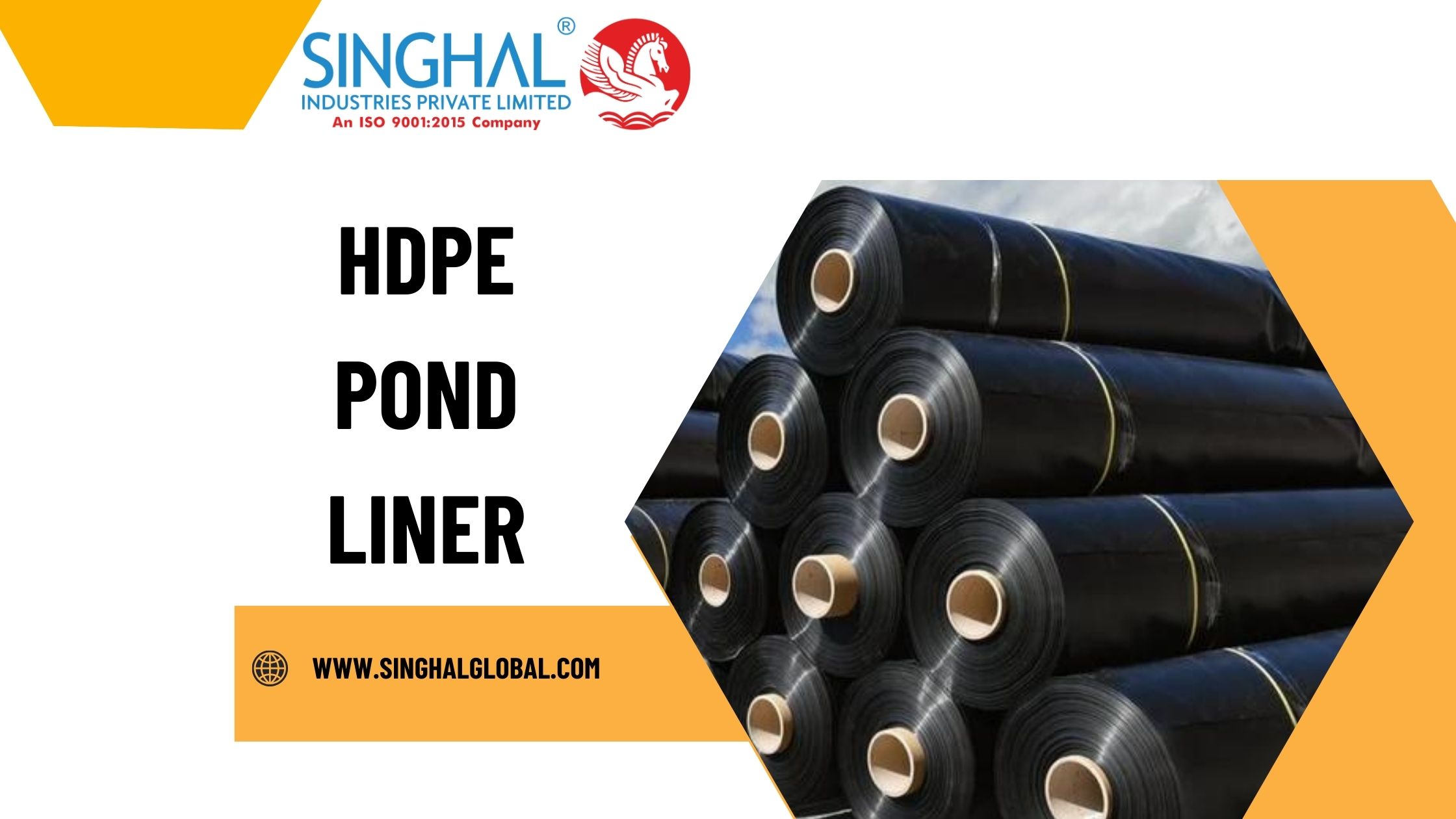Introduction to HDPE Pond Liners
Water bodies, whether natural or man-made, require strong protection against contamination and leakage. This is where HDPE (High-Density Polyethylene) pond liners come into play. These liners offer a reliable, durable, and flexible solution for protecting ponds, lakes, and reservoirs. Whether for agriculture, industrial purposes, or recreational use, HDPE pond liners provide a long-lasting barrier that ensures water retention and environmental protection.
What is HDPE (High-Density Polyethylene)?
HDPE is a thermoplastic polymer known for its impressive strength, flexibility, and resistance to chemicals. It is widely used in various industries due to its high durability. When it comes to pond liners, HDPE stands out because it resists punctures, harsh weather conditions, and UV radiation, ensuring a longer life for your water bodies.
Key Features of HDPE Pond Liners
The features of HDPE pond liners make them the preferred choice for many projects. Here’s why:
- Durability and Strength: HDPE liners are extremely tough and can withstand physical stress, making them ideal for long-term use.
- Flexibility: Despite being strong, HDPE is also flexible, allowing it to adapt to different terrains and surfaces.
- Resistance to Chemicals: HDPE is highly resistant to chemicals, which makes it ideal for industrial ponds where wastewater or contaminants may be present.
How HDPE Pond Liners Protect Water Bodies
HDPE pond liners create a waterproof barrier that prevents water from leaking into the ground, preserving the water supply. Additionally, they prevent soil, contaminants, and other unwanted materials from entering the water, ensuring the health of the water body.
- Leak Prevention: The impermeable nature of HDPE liners ensures that no water seeps out, maintaining water levels.
- Contamination Control: By blocking external contaminants, HDPE liners help in preserving the purity of the water.
Different Applications of HDPE Pond Liners
HDPE pond liners are versatile and used in various industries:
- Agricultural Use: Farmers use them for irrigation ponds to store water for crops.
- Industrial Use: In industries, HDPE liners are used in containment ponds and for wastewater treatment.
- Recreational Use: Artificial lakes and fish ponds in parks often use HDPE liners to ensure water retention and cleanliness.
The Role of HDPE Pond Liners in Environmental Protection
HDPE liners help reduce soil and water contamination, ensuring that harmful chemicals do not seep into the environment. By doing so, they minimize the ecological footprint of industrial and agricultural projects.
HDPE Pond Liner Installation
Proper HDPE Pond Liner Installation is key to the effectiveness of HDPE pond liners. Here’s a quick guide:
- Surface Preparation: Ensure the area is free from sharp objects and debris.
- Laying the Liner: Unroll the HDPE liner carefully, ensuring it covers the entire area.
- Sealing the Edges: Use specialized welding techniques to seal the edges and ensure waterproofing.
- Final Inspection: Once installed, inspect the liner for any gaps or potential issues.
Maintenance of HDPE Pond Liners
HDPE liners require minimal maintenance, but occasional inspections are necessary to prolong their life. Check for any wear and tear, punctures, or chemical degradation. Most issues can be fixed with simple repairs, such as patching small holes or re-welding seams.
Comparing HDPE Pond Liners with Other Liner Materials
When choosing a pond liner, it’s essential to compare HDPE with other materials like PVC.
- Durability: HDPE liners are more durable and have a longer lifespan than PVC liners.
- Cost: While HDPE liners may have a higher upfront cost, they are more cost-effective in the long run due to their longevity.
The Longevity of HDPE Pond Liners
The lifespan of an HDPE pond liner can range between 20-30 years, depending on the environment and proper maintenance. Its resistance to UV light and harsh weather conditions ensures that it can last longer than many other liner materials.
HDPE Pond Liner Price
The cost of HDPE pond liners depends on several factors:
- Size: Larger ponds will require more material, thus increasing the price.
- Thickness: Thicker liners provide more durability but come at a higher cost.
- Installation: Professional installation services can add to the total cost. HDPE Pond Liner Price vary widely, but they offer excellent value for their durability and low maintenance costs.
Choosing the Right HDPE Pond Liner Suppliers
Selecting the right HDPE Pond Liner Suppliers is crucial for getting high-quality HDPE liners. Factors to consider include:
- Reputation: Look for well-established suppliers like Singhal Industries, which offer top-grade HDPE pond liners.
- Quality Standards: Ensure the liner meets industry standards for durability and environmental safety.
Sustainability of HDPE Pond Liners
HDPE pond liners are not just functional but also eco-friendly. Being fully recyclable, they contribute to reducing waste and promoting sustainable water management practices. HDPE liners also prevent harmful leaks, protecting the surrounding environment.
HDPE Pond Liners in India
In India, HDPE liners are widely used in agriculture, industries, and recreational facilities. Suppliers like Singhal Industries provide a range of HDPE pond liners that meet the unique requirements of the Indian market.
FAQs
- What is the average HDPE pond liner price?
- The price varies depending on factors such as size, thickness, and supplier, but generally ranges between $0.50 to $1.50 per square foot.
- How long does an HDPE pond liner last?
With proper maintenance, an HDPE pond liner can last up to 30 years or more. - Where can I find reliable HDPE pond liner suppliers?
Companies like Singhal Industries are known for providing high-quality HDPE pond liners that meet international standards. - How do you install an HDPE pond liner?
Installation involves preparing the surface, laying the liner, sealing the edges, and conducting a final inspection to ensure proper placement. - What are the benefits of using HDPE pond liners?
HDPE liners are durable, flexible, resistant to chemicals, and provide excellent protection against water contamination.


